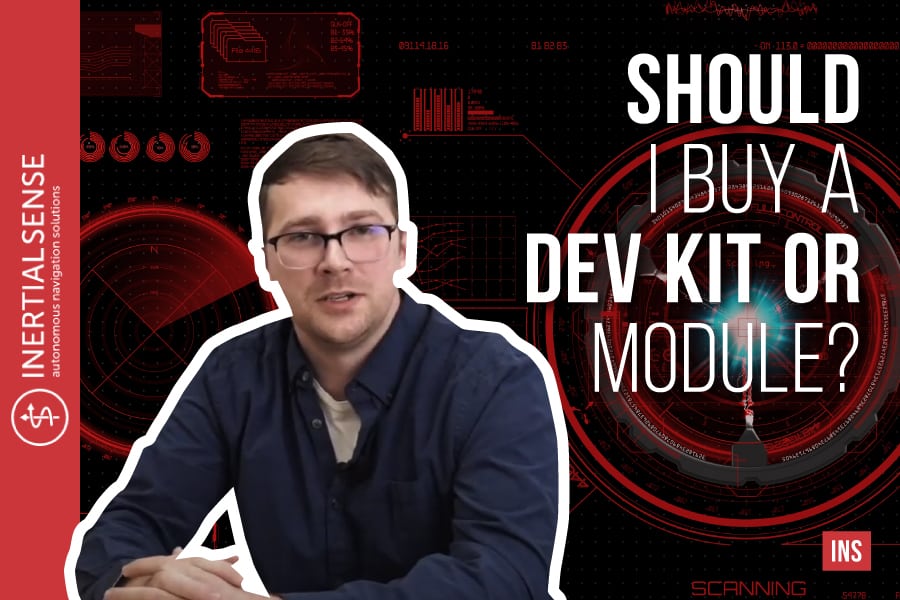
Should I Get an Inertial Sensor Development Kit or a Module?
We get this question all the time, “Should I get an inertial sensor development kit or a module?” Oftentimes, our customers either need something with proper documentation and plenty of adapters to go to different communication protocols OR they have extra experience designing circuits and need something out of the box, at scale. Watch the video below as Morgan Rudolph gives some practical tips you need to know when purchasing the right sensor or dev kit for your robotics build.
What’s The Difference Between a Sensor and Dev Kit?
Reasons to Purchase a Dev Kit:
You might want to buy a development kit over a module because a module is going to be really hard to integrate with. Simply put, the module doesn’t have the extra sensor peripheral built out, whereas, the dev kit includes those extra peripheral and awesome support documentation.
The Module itself supports TTL and a few other interfaces, but the overall integration options are more limited than our dev kits. So, when you purchase a dev kit you get all of those other interfaces, including on the board. You don’t have to do anything else! The implementation time between an EVB and a module is night and day. You’re going to have to work a lot harder on the Module than you would with the Dev.
Reasons to Purchase a Module:
For our more experienced users who have skills in designing circuits and need something practical, a module makes great sense. So if you have experience with TTL then you should be able to easily interface with the modules for your robotics build. Modules are a great choice if you’re looking for something that 1) works great out of the box and 2) can be ordered in large quantities to scale your enterprise.
Learn More:
What Sensor Factors Do I Need for My Navigation System?
Everything You Need to Know About INS
The Future of INS and Autonomous Navigation
Video Transcription
So, for most people that come to our website and buy a micro INS from us for the first time they’re going to want to buy a development kit. And that’s mostly because the development kit comes with so many extra peripherals there’s a lot of support documentation on using that peripheral. And the evb2’s extra features or the ruggeds extra features there. And they come with a lot of adapters to go to different communication protocols.
The one time that new buyers might go and buy a module is when they have that extra experience designing circuits and it’s not their first time going around at it.
So if they have experience with ttl, then they probably could interface fairly easily using a module.

